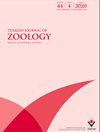对昆虫病原线虫、Steinerma和异横纹肌炎及其细菌共生体进行研究的基本实验室和现场手册
IF 1.3
4区 生物学
Q2 ZOOLOGY
引用次数: 16
摘要
:广谱化学农药对人类和其他非目标生物有害。需要使用天敌的生物控制是一种可行的替代方案。在过去的四十年里,昆虫病原线虫(EPNs)、Steinerma和异横纹肌炎及其共生细菌Xenorhabdus和Photorhabdus等生物防治剂的分离、鉴定和应用大幅增加,并且随着分子技术的进步,这一趋势仍在继续。然而,需要一个简单的动手指南来正确识别、分类和处理它们,特别是对于不完全熟悉这些生物控制剂的研究人员和用户。因此,本手册旨在为对这些生物体感兴趣或希望关注这些生物体的学生和研究人员提供实用指南。该手册描述了这些线虫/细菌复合物的一般生物学和生物组学,并解释了研究和现场实验室经常使用的各种基本标准方案和方法,从分离到应用方法。还包括了在EPNs的生物测定和回收中常规使用的昆虫,意大利圆线虫(Galleria mellonella)和黄粉虫(Tenebrio molitor)的饲养方法。本文章由计算机程序翻译,如有差异,请以英文原文为准。
Basic laboratory and field manual for conducting research with the entomopathogenic nematodes, Steinernema and Heterorhabditis, and their bacterial symbionts
: Broad spectrum chemical pesticides are harmful to humans and other nontarget organisms. Biological control, which entails the use of natural enemies, is a viable alternative. Isolation, identification, and application of biocontrol agents such as the entomopathogenic nematodes (EPNs), Steinernema and Heterorhabditis and their symbiotic bacteria, Xenorhabdus and Photorhabdus have increased substantially over the last four decades, and the trend continues with advancement of molecular techniques. Yet, there is a need for a simple hands-on guide for their proper identification, classification, and handling, especially for researchers and users who are not totally familiar with these biocontrol agents. Thus, this manual is intended to provide a practical guide for students and researchers interested in or wanting to focus on these organisms. The manual describes the general biology and bionomics of these nematode/bacterium complexes and explains various basic standard protocols and methods frequently used in research and field laboratories ranging from isolation to application methods. Methods for rearing the insects, Galleria mellonella and Tenebrio molitor , which are routinely used in bioassays and recovery of EPNs, are also included.
求助全文
通过发布文献求助,成功后即可免费获取论文全文。
去求助
来源期刊

Turkish Journal of Zoology
ZOOLOGY-
CiteScore
2.30
自引率
10.00%
发文量
24
审稿时长
6-12 weeks
期刊介绍:
The Turkish Journal of Zoology is published electronically 6 times a year by the Scientific and Technological Research Council of Turkey (TÜBİTAK).
-Accepts English-language manuscripts in various fields of zoology including systematics, developmental biology, behaviour biology, animal models, molecular biology and molecular phylogeny, genomics, physiology (cell communication and signaling systems), biochemistry and immunohistochemistry, applied parasitology and pathology, nanobiotechnology, ecology, evolution, and paleontology of animal taxa.
-Contribution is open to researchers of all nationalities.
-Short communications are also welcome, such as reports of a preliminary nature or those including new records from specific localities or regions, and the editor reserves the right to decide that a paper be treated as a short communication.
-The papers that deal with purely checklists, new host and non-regional new locality records will not be consider for publication.
-Letters to the editor reflect the opinions of other researchers on the articles published in the journal. The editor may also invite review articles concerning recent developments in particular areas of interest.
 求助内容:
求助内容: 应助结果提醒方式:
应助结果提醒方式:


